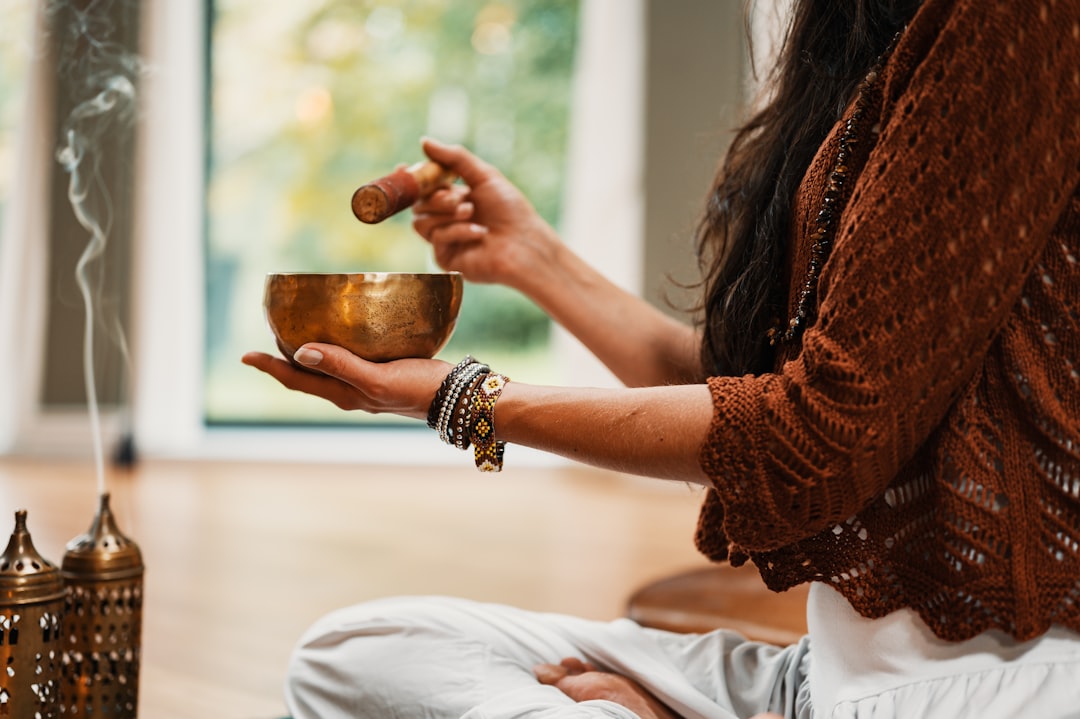Welcome to this blog post where we will explore the benefits of mindfulness in promoting joy and fulfillment in our lives. In today’s fast-paced world, we often find ourselves consumed with stress, anxiety, and the pressure to constantly achieve more. But amidst this chaos, mindfulness presents itself as a powerful tool that can help us find peace and happiness, no matter our circumstances.
Mindfulness is the state of being fully present and engaged in the current moment, without judgment or distraction. This practice can help us cultivate a deeper awareness of our thoughts, emotions, and sensations, leading to increased self-awareness, emotional regulation, and stress reduction.
By practicing mindfulness, we can shift our focus to the present moment, and learn to appreciate the small joys and experiences that often go unnoticed. This shift in mindset can lead to significant improvements in our overall sense of fulfillment, contentment, and happiness.
Throughout this blog post, we will explore five practices that can help you integrate mindfulness into your daily life. These practices include meditation, gratitude, mindful eating, mindful communication, and mindful exercise.
So, whether you are new to mindfulness or looking to deepen your existing practice, this post will provide valuable insights and tools to help you live a happier, more fulfilled life. Let’s dive in!
Practice 1: Meditation
Meditation is one of the most well-known mindfulness practices, and for good reason. It offers numerous benefits for reducing stress and fostering a deeper sense of peace.
One of the key aspects of meditation is learning to focus your attention on the present moment, rather than letting your mind wander to the past or future. This can help reduce anxiety and overwhelm, as well as increase your ability to stay focused and productive.
Studies have also shown that regular meditation can lower blood pressure, improve sleep quality, and even boost the immune system.
But perhaps most importantly, meditation can help cultivate a greater sense of self-awareness and compassion. By learning to observe your thoughts and emotions without judgment, you can begin to understand yourself more deeply and develop a kinder, more empathetic relationship with yourself and others.
There are countless ways to meditate, from simple breath awareness exercises to more structured practices like loving-kindness meditation. The key is to find a method that resonates with you and commit to a regular practice, even if it’s just a few minutes each day.
Remember, mindfulness is not about being perfect or trying to eliminate all thoughts and distractions. It’s about learning to be present with yourself, exactly as you are, and cultivating a greater sense of peace and understanding in the process.
One of the key aspects of meditation is learning to focus your attention on the present moment, rather than letting your mind wander to the past or future.
Practice 2: Gratitude
When it comes to promoting feelings of joy and fulfillment, gratitude is one of the most powerful tools at our disposal. Simply put, gratitude is the practice of intentionally focusing on the positive aspects of our lives and expressing appreciation for them.
So why is gratitude so important? Well, for starters, it helps to shift our focus away from the negative and towards the positive. By regularly taking time to reflect on what we are grateful for, we are training our brains to look for the good in every situation.
Moreover, studies have shown that regularly practicing gratitude can have a range of positive effects on our mental and physical well-being. For example, it can reduce symptoms of depression and anxiety, improve sleep quality, and even boost our immune systems.
So how can we incorporate gratitude into our daily lives? One simple way is to start a gratitude journal. Each day, take a few minutes to write down three things for which you are grateful. They can be big or small, but the key is to really savor the feeling of appreciation for each item on your list.
Another way to practice gratitude is to incorporate it into your daily conversations. Take time to express appreciation to a friend or loved one for something they have done or simply for being in your life. You might be surprised at how much this simple act of gratitude can strengthen your relationships.
Finally, remember that practicing gratitude isn’t about denying the challenges and difficulties in our lives. It’s about cultivating a mindset of abundance and focusing on the good that does exist. So whether you’re facing a tough day at work or dealing with a personal struggle, try taking a few minutes to reflect on the things you are thankful for. You may find that it helps to shift your perspective and ease your stress.
Overall, gratitude is a powerful tool for promoting joy and fulfillment in our lives. By incorporating a regular gratitude practice into our daily routines, we can reap a range of physical and mental health benefits and cultivate a deeper sense of appreciation for the world around us.
By regularly taking time to reflect on what we are grateful for, we are training our brains to look for the good in every situation.
Practice 3: Mindful Eating
Eating mindfully is a practice often overlooked in our society of fast-paced living and “on-the-go” meals. But taking the time to slow down and savor each bite can have numerous benefits for our overall health and wellness.
First and foremost, mindful eating can help us to develop a healthier relationship with food. By paying close attention to the flavors, textures, and sensations of each bite, we become more aware of our body’s hunger and fullness cues. This can help us to better understand and respond to our body’s needs, leading to more balanced and intuitive eating habits.
Additionally, mindful eating can have physical benefits such as aiding with digestion and promoting healthier food choices. When we eat mindfully, we are more likely to choose foods that nourish our bodies and are in alignment with our health goals.
Furthermore, eating mindfully can be a meditative practice in itself. By tuning in to each bite and allowing ourselves to fully engage with our food, we can experience a sense of calm and mindfulness in the present moment.
Some tips for practicing mindful eating include: taking time to appreciate your food before diving in, chewing slowly and thoroughly, and avoiding distractions such as screens or other stimuli during meals. By incorporating these practices into our daily lives, we can develop a healthier relationship with food and promote overall wellness.
Some tips for practicing mindful eating include: taking time to appreciate your food before diving in, chewing slowly and thoroughly, and avoiding distractions such as screens or other stimuli during meals.
Practice 4: Mindful Communication
Communication is a fundamental aspect of our daily lives. We use it to express our thoughts, feelings, and needs. However, sometimes we tend to communicate unconsciously, reacting on impulse without considering the consequences of our actions or words. This can often lead to misunderstandings, hurt feelings, and damaged relationships.
Conversely, mindful communication involves being fully present and aware during a conversation. It means actively listening to the other person without judgment or interruption and expressing ourselves with clarity and kindness. By adopting this practice, we can cultivate stronger and more meaningful relationships and avoid unnecessary conflicts.
One of the core principles of mindful communication is non-judgment. When we approach a conversation without any preconceived notions or biases, we are more likely to listen and respond empathetically. This means being mindful of our tone of voice and body language, as well as the words we choose to use. It also means being aware of the other person’s perspective, finding common ground, and seeking understanding.
Another important principle of mindful communication is active listening. Often, when we are engaged in a conversation, our minds are racing ahead, formulating responses, or judgments based on what the other person is saying. This can lead to misinterpretations and missed opportunities for deeper understanding. By actively listening, we can give the other person our full attention, acknowledge their feelings, and respond with empathy.
Practicing mindful communication can significantly improve our relationships and enhance our overall well-being. By cultivating non-judgment, active listening, and empathy, we can foster deeper connections and avoid unnecessary conflicts. So why not give it a try? Start by being mindful in your next conversation and see how it changes the dynamic. You might be surprised at the positive impact it has on your relationships and your own sense of fulfillment.
It also means being aware of the other person’s perspective, finding common ground, and seeking understanding.
Practice 5: Mindful Exercise
Exercise is an essential aspect of maintaining a healthy body and mind. However, exercising mindfully can elevate the benefits of physical activity even further. When you engage in exercise with intention and awareness, you become more attuned to your body’s signals and can work out more effectively.
One of the primary physical benefits of mindful exercise is that it boosts circulation and helps release endorphins, also known as “feel-good” hormones. These endorphins help to reduce stress and promote feelings of happiness and well-being.
On a mental level, engaging in mindful exercise can help shift our focus away from daily stresses and concerns. When we exercise with intention, we become more present in the moment and can let go of distracting thoughts that normally weigh us down.
Additionally, mindful exercise can promote better overall health by encouraging us to listen to our bodies and avoid pushing ourselves too hard. When we exercise with the awareness and intention of what is best for our bodies, we avoid the risk of injury and strain that can occur from pushing ourselves too far.
Some suggestions for engaging in mindful exercise might include a yoga or meditation class, a mindful walk or run outdoors, or even just spending a few minutes stretching and breathing deeply before starting any physical activity.
Incorporating mindful exercise into your daily routine can be a powerful tool in promoting physical and mental health, reducing stress, and enhancing overall well-being. So why not give it a try and see for yourself the transformative benefits that it can bring to your life?
These endorphins help to reduce stress and promote feelings of happiness and well-being.
Conclusion: Bringing Mindfulness into Everyday Life
In conclusion, we’ve explored five key practices for incorporating mindfulness into our daily routines. These practices have been shown to foster joy, reduce stress, and promote a greater sense of fulfillment.
Meditation is a powerful tool for calming the mind and reducing anxiety. By setting aside time to turn inward and focus on our breath, we can become more present and develop a deeper awareness of our thoughts and emotions.
Gratitude is another practice that can shift our perspective to the positive aspects of our lives. When we take time to appreciate the people and experiences that bring us joy, we cultivate a sense of contentment and satisfaction.
Mindful eating is an excellent way to improve our relationship with food and promote overall wellness. By paying attention to our hunger cues and savoring each bite, we can avoid overeating and better nourish our bodies.
Mindful communication is essential for building stronger connections with others. By actively listening and speaking with intention, we can foster more meaningful relationships and avoid misunderstandings and conflicts.
Lastly, mindful exercise can help us cultivate physical and mental strength. By engaging in physical activity with intention and awareness, we can develop a greater sense of control over our bodies and feel more energized and focused.
By incorporating these practices into our daily lives, we can experience a more joyful and fulfilling existence. It may take time and practice to establish these habits, but the benefits are well worth it. So why not give it a try? Start small, and see where mindfulness takes you.





